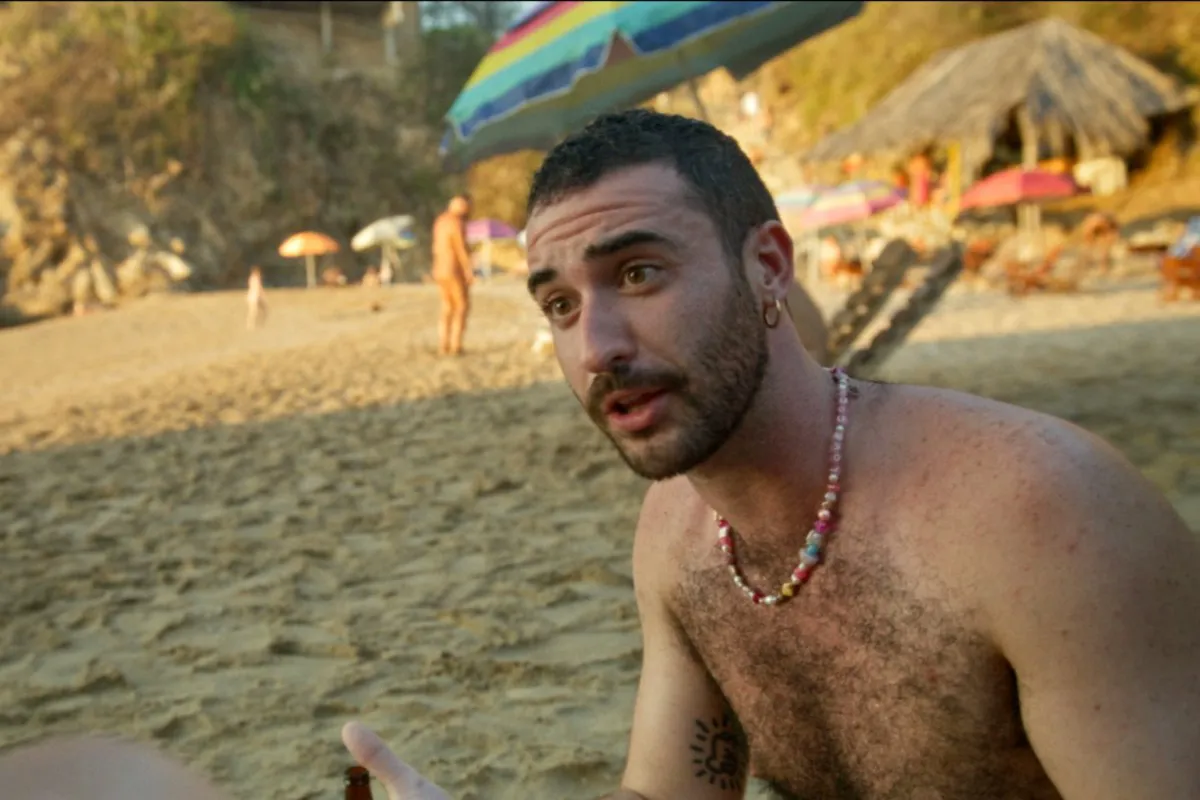“Rotting in the Sun” is like “Uncut Gems” meets “Casablanca,” who befriended the second “Godfather,” who went on a date with “Mean Girls,” who strolled with “Annie Hall,” who got lost in “Parasite,” who married “Snow White,” who argued with Pornhub, who slept with “The Little Mermaid,” who woke up with a “hey, how’s it going?” who went to a pub with a friend who had lunch with an espresso that winked at sex, who missed infidelity, who witnessed your child’s first breath, which coincided with saying goodbye to your mother, who had terminal cancer, which was connected to the fashion industry. Yes, that’s right, the fashion industry.
This is roughly how one might describe “Rotting in the Sun” in an interview. The film is directed by Jordan Firstman and Sebastián Silva, who play themselves – an influential blogger and an arthouse film director, respectively. Silva is not only an actor but also the real author of everything happening on screen: he is both the director and the screenwriter. However, even wrapping himself and the audience in countless layers of irony and self-reflection, the director remains within the bounds of audience-friendly material. Nevertheless, you’ll have to figure out where “Casablanca” is, where the espresso is, and where the terminal cancer is on your own.

Jordan Firstman in a still from “Rotting in the Sun”
The Plot
The plot revolves around Silva, a burnt-out director, writer, and artist, who lives with acquaintances in the middle of nowhere. He spends his days aimlessly wandering around, popping painkillers like candy, and, most importantly, constantly joking about suicide. So often, in fact, that it stops being a joke. After yet another failed attempt to earn something from the hapless creator’s paintings, he is sent to a resort to clear his head.

Sebastián Silva in a still from “Rotting in the Sun”
Analysis
When Silva, lying on a nudist beach, intently reads Emil Cioran’s “The Trouble with Being Born,” everything about him seems to become clear. There are countless naked bodies swirling around, many of whom are unsuccessfully trying to cheer up the intellectual on vacation. This seems like a key, if not the most telling, scene that perfectly captures the mood of the film. Firstly, the episode is filled with sexual tension; secondly, it is frankly comical; and thirdly, it is completely unnecessary. Only the hyperactive blogger Firstman, who is rambling about one of the director’s previous films, achieves relative success in interacting with Silva.

Sebastián Silva in a still from “Rotting in the Sun”
Subsequent events unfold rapidly. Without revealing too many plot twists, it’s worth noting that one of the characters doesn’t just wither, but rots in the sun. No one is in a hurry to answer the obvious question of whether this is serious or not. Silva combines the nightmarish with the comical, and the brilliant with all sorts of nonsense, so that all questions about the nature of what is happening remain to be asked only of oneself. Is it cringe, basic, a nightmare come true, a Hitchcockian thriller, or a statement about the harm of social media? “Rotting in the Sun” is simultaneously everything and nothing. If we start from the title, then what we see on the screen is evidence of decay, but again, it is impossible to determine exactly what – interpersonal communications, coherent narratives, or filmmaking in general? But at the same time, one can’t call the film a Rorschach blot; formally, it’s a comedic detective story – fortunately, there are both victims, perpetrators, and those on the trail.
Conclusion
The final twist gives the impression, if not of the doom of humanity, then at least that these people – local celebrities who have long since separated into a separate class – cannot be saved. Many commentators reduce the film to social criticism, but focusing on one aspect seems wrong. Too much here is fake, as if behind the film on the screen there is some other movie, and behind it another, and another – the extremely realistic “Rotting in the Sun” (the handheld camera wandering behind the characters seems like a separate character) is frightening precisely because of the convincing indifference of the characters towards each other. The more recognizable they are, the less you want to believe in them. It is impossible to live in such a world, and it begins to seem that the absurdly depressive Cioran, with aphorisms like “only an optimist can commit suicide,” is not so wrong, and the best thing to do in the midst of such a public is to disappear. Drawing an obvious caricature, while escaping from any specifics, Silva nevertheless says too much about himself and those around him. Just as a beach hides under the cobblestones, so too does a sincere wish for oneself and the world to be at least sometimes more attentive and kinder to those around us hide under layers of reflection and narrative tricks.